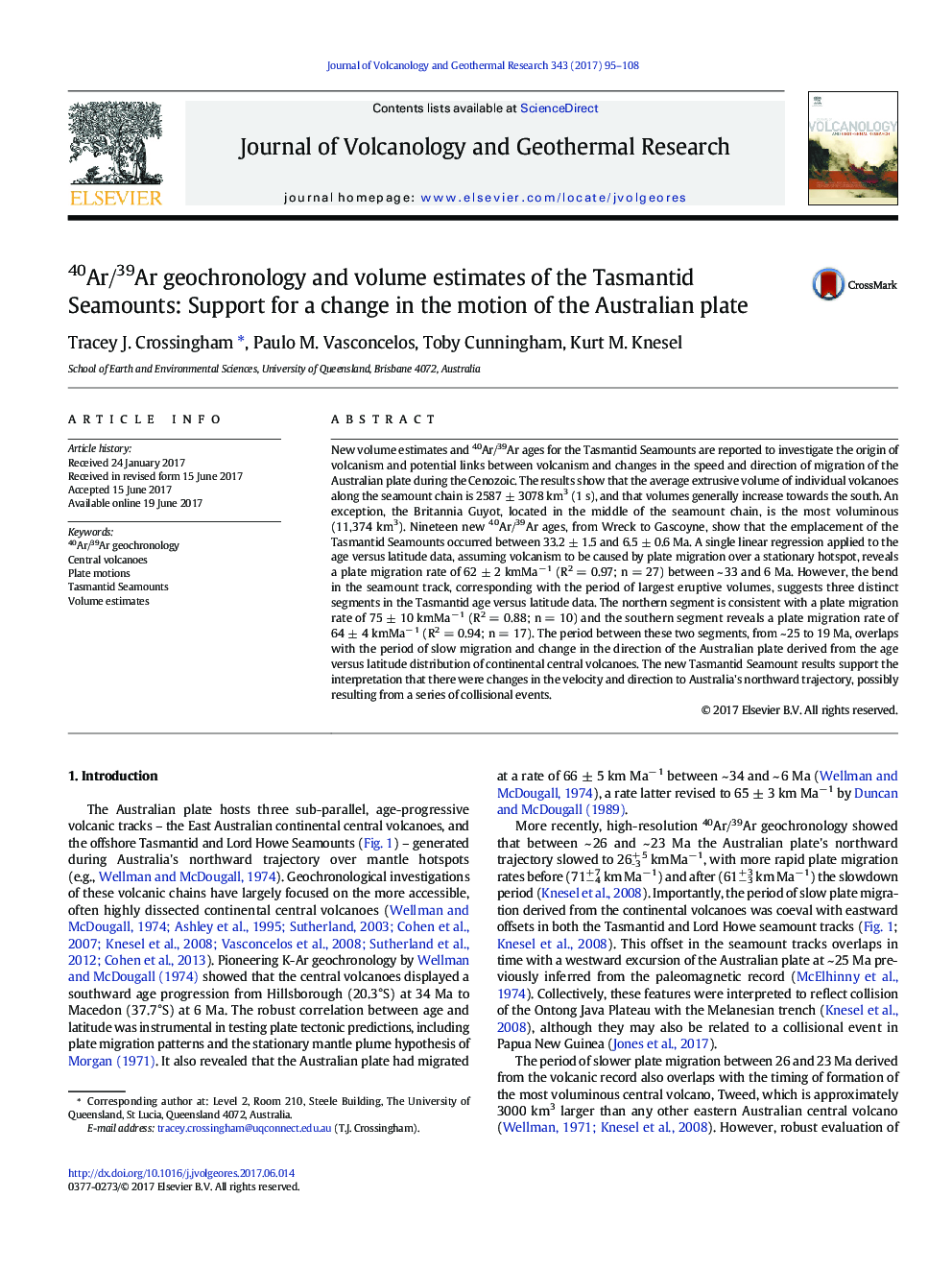| Article ID | Journal | Published Year | Pages | File Type |
|---|---|---|---|---|
| 5783690 | Journal of Volcanology and Geothermal Research | 2017 | 14 Pages |
â¢New geochronology and volume estimates are presented for the Tasmantid Seamounts.â¢Tasmantid Seamounts formed concurrently with continental central volcanoes.â¢Coeval volume increases are observed in the volcanic tracks offshore and onshore.â¢Abrupt volume increase is also coeval with the bends in the seamount track.â¢These changes may reflect deceleration of the Australian plate between ~ 25 and 19 Ma.
New volume estimates and 40Ar/39Ar ages for the Tasmantid Seamounts are reported to investigate the origin of volcanism and potential links between volcanism and changes in the speed and direction of migration of the Australian plate during the Cenozoic. The results show that the average extrusive volume of individual volcanoes along the seamount chain is 2587 ± 3078 km3 (1 s), and that volumes generally increase towards the south. An exception, the Britannia Guyot, located in the middle of the seamount chain, is the most voluminous (11,374 km3). Nineteen new 40Ar/39Ar ages, from Wreck to Gascoyne, show that the emplacement of the Tasmantid Seamounts occurred between 33.2 ± 1.5 and 6.5 ± 0.6 Ma. A single linear regression applied to the age versus latitude data, assuming volcanism to be caused by plate migration over a stationary hotspot, reveals a plate migration rate of 62 ± 2 kmMaâ 1 (R2 = 0.97; n = 27) between ~ 33 and 6 Ma. However, the bend in the seamount track, corresponding with the period of largest eruptive volumes, suggests three distinct segments in the Tasmantid age versus latitude data. The northern segment is consistent with a plate migration rate of 75 ± 10 kmMaâ 1 (R2 = 0.88; n = 10) and the southern segment reveals a plate migration rate of 64 ± 4 kmMaâ 1 (R2 = 0.94; n = 17). The period between these two segments, from ~ 25 to 19 Ma, overlaps with the period of slow migration and change in the direction of the Australian plate derived from the age versus latitude distribution of continental central volcanoes. The new Tasmantid Seamount results support the interpretation that there were changes in the velocity and direction to Australia's northward trajectory, possibly resulting from a series of collisional events.
